by Alvaro Videla
What I learned from DuraznoConf about the human side of programming
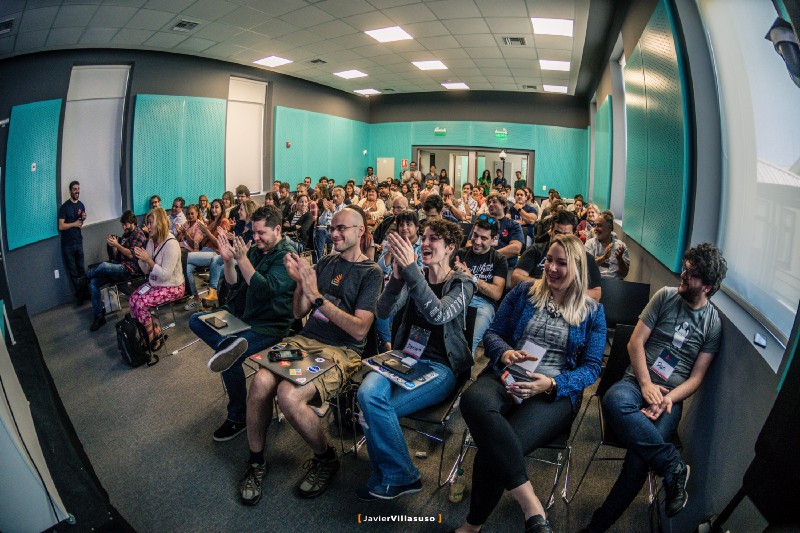
“I can’t believe I’ve convinced all of you to come to Durazno!” With those words, I welcomed nine Argentines and one American into my hometown. It was 3:00 AM on a cold spring night in Durazno, a city in the middle of Uruguay, which is almost like saying in the middle of nowhere.
We were just a day and a half away from the start of DuraznoConf. This event started as a tech conference, but as the hours went by, it became something much bigger than anything we could have ever hoped for.
Before I keep going, what is DuraznoConf?
DuraznoConf is a conference that was held last year on October 23rd and 24th in Durazno, Uruguay (We are already preparing this year’s edition.).
The conference started as a joke on Twitter—a joke that went on for too long—up to the point where it became an actual tech conference. Last year, at the end of July, I put out the following tweet:
As soon as the tweet went out, reply after reply came back with people that were eager to take part in such an event, just for the sake of visiting Durazno, a town of 30,000 people. But not just any town: a town where I promised that the unexpected would happen. Of course the city lived up to its fame, but more on that later.
Making the conference happen
So how did we go from sending out a tweet to actually organizing a conference, all while living in Switzerland?
Once I saw that the people replying to my original tweet weren’t joking, I decided to make a phone call to no other than the city’s major, the Intendente Carmelo Vidalín. Right there I told him that I wanted to organize a unique tech event in Durazno, bringing top people from the tech scene to speak at the conference. He loved the idea, and told me I could count on the city’s support.
The next step was finding a venue. Here luck was also on our side. Not so long ago, UTEC, a new university, had just opened in Durazno. And it wasn’t just any kind of university — but a tech university.
So I got in touch with Daniela González, the university director, and told her about my idea. She loved it as well, and the next day she was already in talks with the city government to see how they could work together to make it happen.

And that was something that I kept on seeing as we continued moving forward with the many details that involve making a tech conference a reality: People kept chiming in, asking if they could lend a hand in any way.
But before I get to that, let’s see how we built a website for the conference.
Getting the word out
That’s when I called Pablo Franco, a great creative from Durazno that works as a web designer. I thought if we wanted to bring the tech scene to Durazno, we might as well start by showcasing the local talent. So Pablo was the perfect person to think of not only for designing the website, but for the overall image of DuraznoConf — logo, colors, banners, t-shirts, and so on.
When I phoned Pablo, he accepted right away. Not only that, he said, “I know who can take care of the conference photography”. He got in touch with Javier Villasuso, a great photographer from Durazno, who also loved the idea of working with us.
And just like that, word about the conference started circulating around the city, and more people kept calling in and offering their help. Here I should give a special mention to Marcelo Mondino, owner of the local TV Production Company “Zebra Televisión”, and director of Canal Seis, the local TV Channel.
Marcelo called me one night and told me that not only was he offering his TV Channel for broadcasting the conference to the whole city, but also that he would get in touch with people from Montevideo so the conference would end up being broadcast to the whole country!
And so he did! He got in touch with VeraTV, the streaming service from Uruguay’s main telco, where they broadcast the conference to the world.
But Marcelo’s efforts didn’t stop there, he got in touch with the country’s main Cable Provider TCC, where, via their channel Asuntos Públicos, they broadcast the event to all their subscribers across the country. Thanks to all this exposure, some grandmas that couldn’t travel to see their grandkids speak at DuraznoConf were able to see them from the comfort of their living rooms!
Creating a website
The next thing to do was to create the website. That’s when one of our speakers, Aymará Samudio, jumped in and offered her help. Not only that, but during a chat with her, we brainstormed the tagline for the conference: The Human Side of Programming.
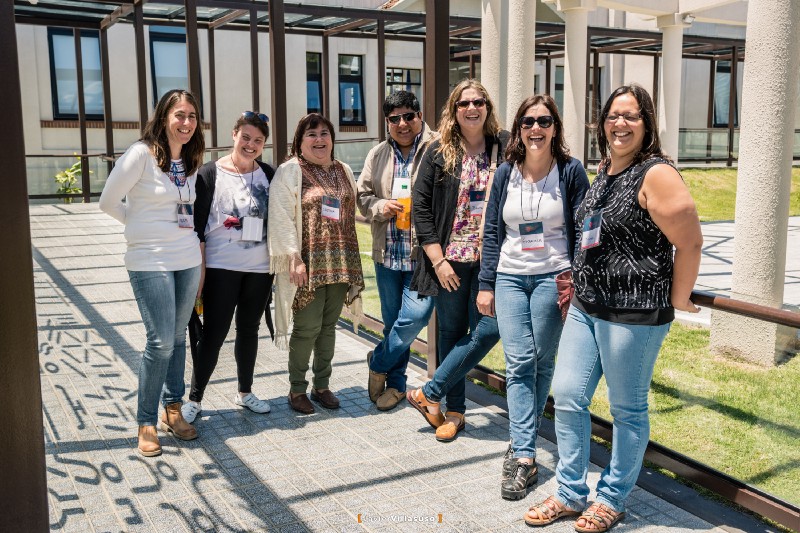
Representation matters
The goal was not to create just another tech conference. We wanted a conference that would get people together, and that would help form a community in far away places.
Also we wanted to promote tech and programming, for people that might not have had the chance to take part in it yet.
Uruguay is a country of 3.5 million people, and half its population lives in the capital city. This means that across its history, we have seen a hugely centralized country where things like universities, hospitals, and many other things only exist in the capital.
The foundation of UTEC in Durazno represents an effort to change that, to bring higher education to the countryside. And since Durazno is located in the center of the country, it became one of its headquarters.
That being the first step, with DuraznoConf we wanted to bring role models to people. We wanted to show them that other people just like them, with struggles similar to theirs, also were able to start a career in tech.
Aymará said “You cannot be what you cannot see”, and I completely agree with her. Representation matters. With that in mind, we looked for speakers that could share stories of how they kickstarted their careers in tech, while being almost outsiders, or in other cases, did it against all odds. At the same time we wanted to bring people that had their feet on the ground — relatable people that could share their inspiring story while at the same time giving us the message of “If I did it, you can do it to”.
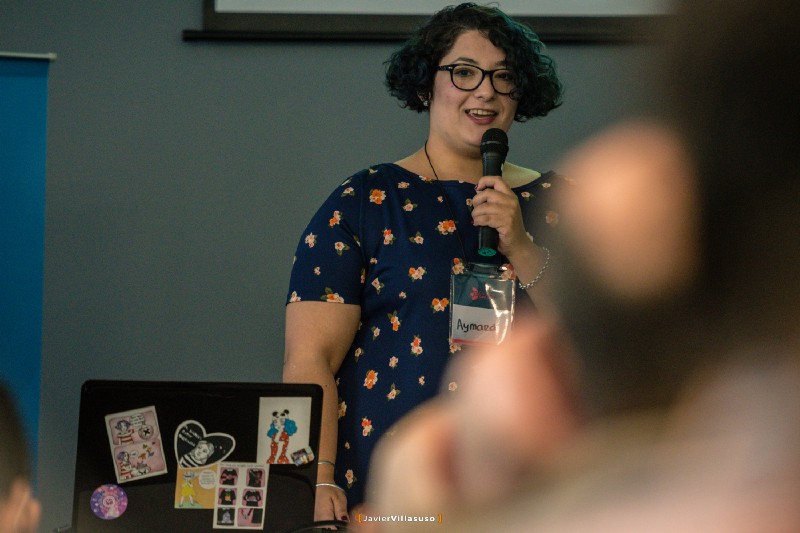
With that in mind, we got speakers from Uruguay’s countryside, from towns that are even smaller than Durazno. These speakers work remotely for companies in Spain, or for the likes of StackOverflow, like Rodrigo Méndez and Gervasio Marchand.
Their remote work experience was particularly important, because one of UTEC’s goals is to educate people in the countryside so they can remain with their talent here. Otherwise, studying and then having to move to Montevideo to find a job makes no sense.
We also got speakers from Argentina’s countryside, like Aymará Samudio who’s based in the Argentinean Andes, where she runs an academy to help women get into programming. Also from a nearby province, we invited Pablo Sanchez, who went to sell his startup to Mercado Libre, Latin America’s biggest online retailer. Both stories made perfect sense for DuraznoConf.
Then we got Laura Santana, a Cuban Engineer that moved to Uruguay to pursue a career in tech. She told an amazing story of how she learned programming in Cuba and later sent out job applications and exercises with almost no internet. Really inspiring.
From Montevideo, we got New York-based Federica Pelzel, who’s director of Platform and Data analytics at MasterCard. She also worked for the government of Buenos Aires, so it was great to have her share her experience about how she end up working in one of the world’s top cities.
Speaking of New York, we got one of the most talented Argentinean programmers I know, Dan Zajdband. He told the story of how basically with a tweet, he started a conversation that got him working at the New York Times. In his own words: “One day I saw myself sharing offices with Pulitzer Prize winning people”.
Also from Montevideo we invited Daniela Vázquez, an Economist turned Data Scientist, who ended up being part of the NASA Data Science community! What an experience. And it was really fitting for the message we wanted to transmit with the conference. As I said above, many people in Durazno didn’t have the opportunity to choose a career in tech before UTEC, because there were no careers in tech!
Daniela showed that it was possible to pivot into tech even after having completed your studies.
And finally, we invited Joyce Park to speak at the conference. She’s a very special person to me, because, thanks to her book, I got started in programming. That was a bit over ten years ago, when in Durazno there were no universities. Joyce is a Silicon Valley veteran that told us about her experiences in the startup world, with the goal of sharing her tips for creating a startup scene in Durazno (and please tell no one, but her Korean mom makes the best palta-toast in the whole Silicon Valley).
Workshops — Hands on Experience
Once we had the talks sorted out, we wanted to set up some workshops for the conference. This would allow people to learn about new technologies, programming languages, and ways of working efficiently in teams.
For that we had Sebastián Waisbrot give us a Go workshop, Guido Vilariño ran his Docker workshop, Jacopo Romei, who came from Italy, showed us how to use the Dot Game to teach people an effective method for working in teams, and finally the amazing Aymará Samudio had her class about Initial Web Development.
In Aymará’s workshop, we had teenagers learning to program alongside people that were past their fifties — all learning together. It was really great that UTEC could offer each of the participants their own computers, so nobody felt left out.
Making the Conference Happen
So we had the speakers, we had the design and image for the conference, and the website. Then it was time to make things happen. That’s when Daniela González from UTEC and her secretary Pablo Salazar stepped in and worked out all the logistics so the university would be ready to host the event.
They also took care of coordinating all the details with the city government, from getting the streaming for the conference, to arranging the transport and accommodation for the speakers. The city government even provided a guided tour for the speakers so they could see all the touristic places around town, plus the city’s main industries.
Durazno, the City where magic happens
Speaking of accommodation, the night before the conference, we realized that the people arriving from Argentina would reach Durazno at about 3:00 AM — but their hotel reservations had check ins at noon. I called the owner of Hotel Durazno, telling him about our problem. “I call you back in five minutes”. Five minutes later and he got us accommodation for two people, at no extra cost. That was the people of Durazno trying to make things happen.
But we still had to fit 8 more somewhere else. That’s when the university called the Air Force—yes, don’t act surprised, Durazno has an international airport.
The Air Force shared one of their soldier barracks with us so the rest of our Argentinean guests could stay there for the night. The next day in the morning, the military airplanes were waking them up with their engines, while the pilots started their training maneuvers. For some of the Argentinean crowd, that was an unforgettable experience.
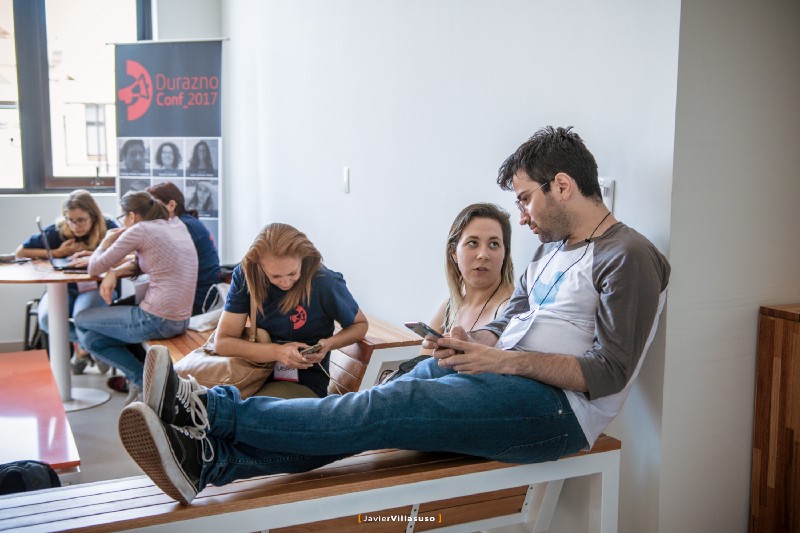
But help didn’t stop there. We had to pick them up from the bus station at 3:00 AM, and take them to their hotel or to the Air Force outside of town. That night I was talking with some friends from Diaro El Acontecer about our preparations for the conference. They had helped us in promoting the conference via their newspaper by writing articles about it, and running ads about it. Martín Román, the newspaper owner asked for my phone and told me he would try to help me out. Half an hour later and he had volunteered a minibus to go pick up people from the bus station!
Those are some of the many experiences we had during the conference, where we saw a city coming together to make the conference happen. That makes me really proud, because I wanted to show that if Durazno gets to it, we can make things happen.
Promoting the Conference
As said above, thanks to Marcelo Mondino the conference reached national television, via cable, and also via streaming. Diario El Acontecer helped us promote the conference via their local newspaper, but we also wanted to go national.
We got Uruguay’s main newspaper, El País, to write a couple of articles about DuraznoConf. El Observador also wrote about it as well in their tech portal.
We also got coverage in Argentina’s main newspaper, Clarín, who wrote a story about our speaker Daniela Vázquez. InfoQ Brazil also ran a story about the conference.
During the conference, we toured the local radios and TV channels, and after the event, the speakers got invited to discuss at the local parliamente about the importance of creating a tech scene in Durazno.
Diversity Matters
All in all, we tried to make a lot of noise about the conference, because we wanted to show people that it’s crucial to bring tech to the countryside, to far away places. Important events don’t only happen in capital cities in big countries.

Also, from a logistical point of view, it’s just as easy to bring 10 great speakers to a far away city, as it is to force everyone from far away cities to fly to conferences that only happen in the US or Europe.
Sometimes people in Latin America struggle to attend tech events in the US or Europe because of economical reasons. Bringing tech conferences to Latin America helps broaden the access to tech to everyone there. These shared experience enrich everyone’s perspectives, which is something that the tech world really needs. We need to make tech accessible and affordable.
Community
My big takeaway from the conference was the community that formed around the speakers, and the city itself. Everyone felt like they were part of a family, and we tried to help each other so the conference would end up being a success.
I made a lot of new friends, and had experiences that will be hard to forget. So in closing, I’d like to share some lyrics from Atahualpa Yupanqui’s song, Los Hermanos.
Yo tengo tantos hermanos que no los puedo contar. En el valle, la montaña, en la pampa y en el mar. Cada cual con sus trabajos, con sus sueños, cada cual. Con la esperanza adelante, con los recuerdos detrás.
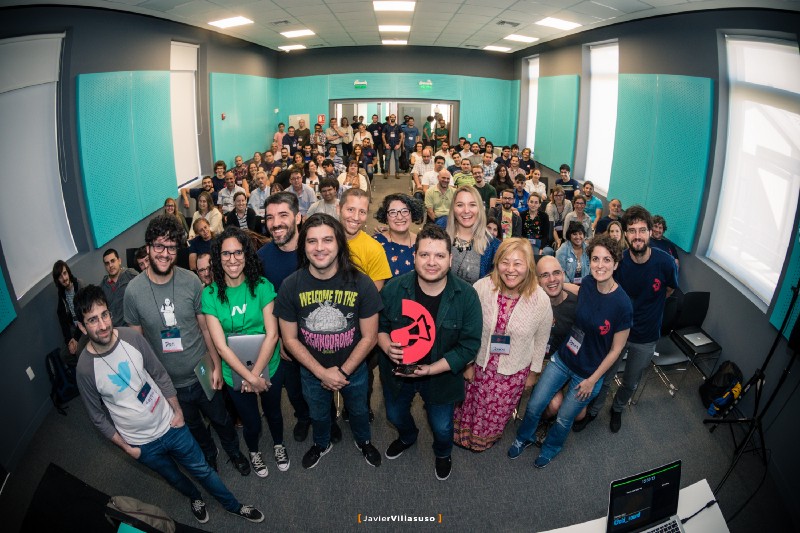
Notes
- Photos by Javier Villasuso.
- You can watch the talks from DuraznoConf 2017 here.